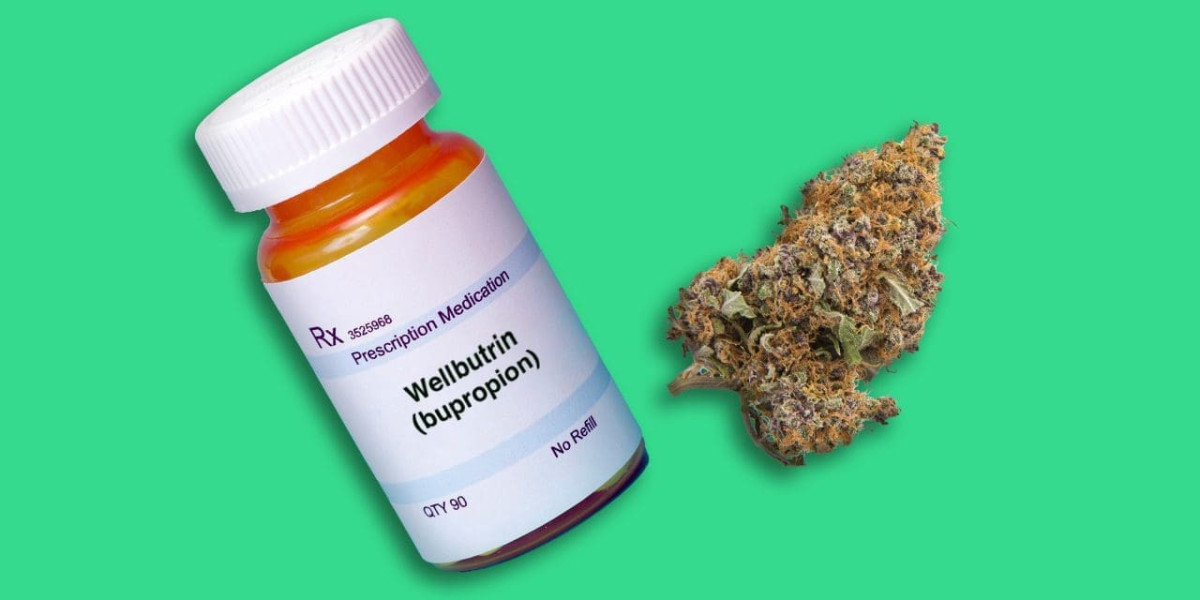The interaction between Wellbutrin and marijuana is becoming an increasingly important topic as more individuals turn to alternative remedies while managing mental health conditions. Wellbutrin, known generically as bupropion, is commonly prescribed for depression, anxiety, and smoking cessation. Meanwhile, marijuana is widely used for its therapeutic effects, including stress relief and mood regulation. But the question arises—can these two substances safely coexist in the body? Understanding how they interact can help users make informed decisions about their mental and physical well-being.
The Role of Wellbutrin in Mental Health Treatment
Wellbutrin is an atypical antidepressant that works differently than SSRIs and other common antidepressants. It influences the brain’s levels of dopamine and norepinephrine, two neurotransmitters heavily involved in mood, focus, and motivation. Unlike many antidepressants, Wellbutrin is less likely to cause sexual side effects or weight gain, making it an appealing option for many patients. It’s also FDA-approved for helping individuals quit smoking under the brand name Zyban. However, despite its benefits, Wellbutrin comes with potential side effects, including dry mouth, insomnia, increased heart rate, and in rare cases, seizures—especially when taken in high doses or mixed with other substances.
Why People Combine Marijuana with Antidepressants
Many people use marijuana to manage anxiety, depression, and chronic pain. For some, combining marijuana with prescribed medications like Wellbutrin may seem like a natural step toward a holistic approach to wellness. Marijuana can offer temporary relief from symptoms like sadness, lack of motivation, and stress. However, the pharmacological interaction between marijuana and psychiatric medications is not yet fully understood. As more people experiment with combining Wellbutrin and marijuana, researchers and healthcare professionals urge caution, due to both substances acting on brain chemistry in complex ways.
How Marijuana Affects Brain Chemistry
Marijuana contains cannabinoids, primarily THC and CBD, that interact with the endocannabinoid system—a complex cell-signaling system in the human body involved in regulating mood, appetite, sleep, and pain sensation. THC, the psychoactive compound in marijuana, can create a euphoric feeling, which some people find helpful in lifting depressive symptoms. CBD, on the other hand, is non-psychoactive and is thought to help with anxiety and inflammation. However, marijuana use can also lead to increased anxiety, paranoia, or even psychosis in certain individuals, especially when used in high doses or in those who are genetically predisposed to mental illness.
Possible Interactions Between Wellbutrin and Marijuana
Combining Wellbutrin and marijuana has not been extensively studied, but anecdotal evidence and limited research suggest some potential risks. Wellbutrin lowers the seizure threshold, and marijuana, especially strains high in THC, may exacerbate this effect. This could make seizures more likely in some users. Both substances also impact the cardiovascular system, increasing heart rate and potentially leading to palpitations or elevated blood pressure. Furthermore, since both drugs influence mood and cognition, their combination might lead to unpredictable emotional states, including mood swings, heightened anxiety, or cognitive dulling.
Personal Experiences and Unpredictable Reactions
Anecdotal reports show a wide range of experiences when it comes to combining Wellbutrin and marijuana. Some individuals report feeling more focused and relaxed, while others experience heightened anxiety or agitation. These variations could be due to differences in dosage, strain of marijuana, timing of consumption, and individual body chemistry. While one person may tolerate the combination well, another might suffer from increased irritability, confusion, or even panic attacks. These differences highlight the need for medical supervision when experimenting with multiple mood-altering substances.
Consulting a Healthcare Professional Is Essential
Because Wellbutrin is a prescription medication with potential side effects, anyone considering mixing it with marijuana should first speak to a healthcare provider. A qualified professional can evaluate a patient’s mental health history, current medications, and any underlying conditions that could affect how they respond to this combination. Self-medicating with marijuana while on psychiatric medication might seem harmless, but without proper guidance, it could lead to serious complications. Physicians may be able to adjust dosages or suggest alternatives that minimize risk while maximizing therapeutic benefit.
Legal and Accessibility Considerations
With the legalization of marijuana in many states and countries, access has never been easier. However, legal doesn’t always mean safe—especially when mixing it with prescription medications like Wellbutrin. Patients should understand the legal status of marijuana in their region, and whether the strain and dosage they’re using is appropriate for their health condition. Additionally, the cannabis industry is largely unregulated, which means that not all products are created equal. Potency, purity, and chemical composition can vary greatly from one brand to another, complicating the interaction with medications.
The Importance of Mental Health Monitoring
If someone decides to use both Wellbutrin and marijuana, regular mental health check-ins are crucial. Monitoring mood changes, side effects, and physical symptoms can help detect any problems early. Keeping a journal, working with a therapist, or having ongoing consultations with a doctor can ensure that the treatment plan remains safe and effective. Mental health is dynamic, and what works one month might need adjustment the next, particularly when substances that alter brain chemistry are involved.
Moving Forward With Awareness and Caution
The combination of Wellbutrin and marijuana is an area still shrouded in uncertainty, but what’s clear is that it demands caution. While both substances may offer individual benefits, their interaction is not without risk. The best approach is one of awareness, medical oversight, and honesty about personal experiences. For those dealing with depression or anxiety, it’s crucial to remember that there’s no one-size-fits-all solution—and experimenting without guidance can sometimes do more harm than good.







